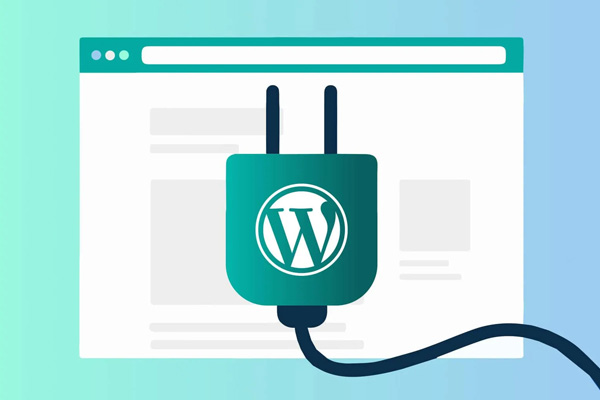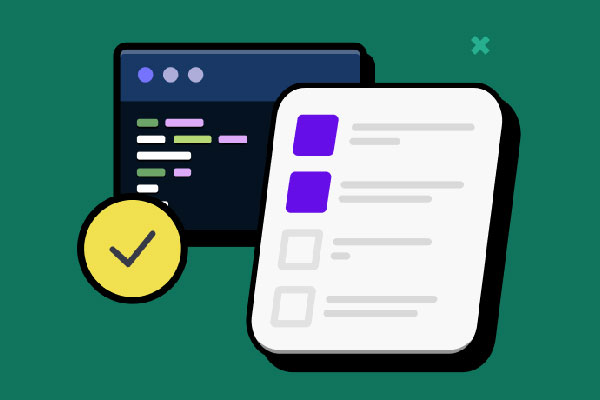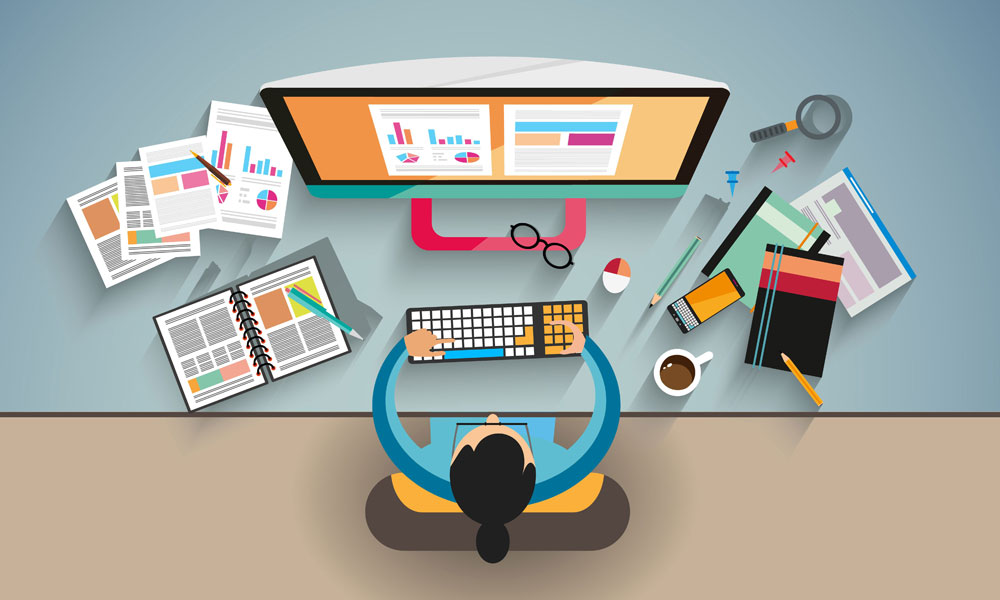
Choosing the right web designer can be pivotal to your project’s success. The key lies in asking the right questions to gauge a designer’s skills, process, and fit with your vision. In this guide, we’ll equip you with essential questions to ask when searching for a web designer and choosing the web design company, ensuring you embark on this crucial partnership with clarity and confidence.
Did you know that if you are an Irish business, you might be eligible for the Trading Online Voucher from the local Enterprise Office?
Table Of Contents
Key Takeaways
- Clearly defining your website’s purpose and desired features is crucial for effective web design and communicating your vision to potential designers.
- Evaluating a web designer’s experience, prior work, and their process, including responsiveness to feedback and proficiency with various design tools, is essential.
- Securing post-launch support and ensuring clear communication channels through project management tools contribute to the success and long-term maintenance of your website.
Identifying Your Web Design Needs

Before starting your search for a web designer, you need to outline the primary purpose of your website and the features you desire. The purpose of your website forms the foundation of your site’s strategy, informing goal-setting, and measuring success.
Regardless of your site’s goal – be it generating sales, capturing leads, providing information, or acting as an online portfolio – you should clearly communicate this aim to potential web designers.
Defining specific features and functionality, such as intuitive navigation and quick load times, ensures a smooth and user-friendly experience. The scope of your web design project will be determined through careful planning of these features and deliverables.
How much experience do you have?
An experienced designer brings a wealth of knowledge to a project, and their portfolio often reflects this expertise. Ask potential web designers about their previous work and how it aligns with your project. Consider their focus on user experience (UX), their commitment to refining work based on feedback, and their ability to optimise website performance.
Additionally, their expertise in image optimisation, web hosting, caching strategies, and problem-solving abilities are all factors that contribute to a high-performing website.
What kinds of websites have you designed?
Gaining insights into your potential web designer’s past projects can be valuable in assessing their capabilities. The initial stages of their process should involve:
- Goal identification, where they work with the client to determine the purposes of the new website
- Sitemap and wireframe creation
- Content creation
- Testing each page for user experience and SEO standards
Launching the website and then making adjustments based on user feedback and testing signifies a successful launch phase.
Can you show me some websites you have designed?
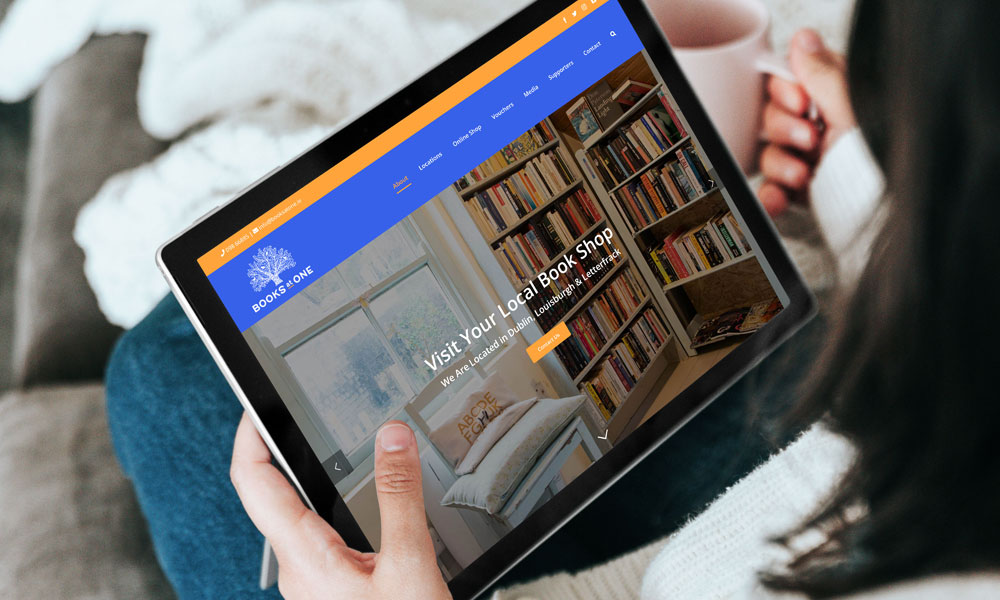
Effective project management in web design requires breaking down requirements into specific tasks and subtasks, tackled in a collaborative process. Agile project management methodology is popular for web design as it focuses on cycles or sprints, allowing for immediate action on feedback and making responsive changes at every stage.
Communication tools and platforms like Slack, Dropbox, Google Docs, and Google Drive can support quick communication and provide a centralised location for all project-related files. A client portal can be set up to provide you with ongoing access to project updates, drafts, and deliverables, enhancing transparency and communication.
What kind of results did those websites experience?
Visitor engagement and conversion rates can quantitatively gauge the success of a web design. Exit rates and bounce rates can provide insights into whether the web design effectively captures user attention. Time spent on web pages and interactions with design elements can also serve as indicators of an engaging design.
How long will it take to design my website?
Several factors influence the duration of a web design project. These include:
- The designer’s skills in user experience (UX) design
- Their understanding of graphic design principles
- Their command of HTML and CSS
- Familiarity with software tools like Adobe Photoshop, Adobe Illustrator, and Sketch
The level of expertise with these tools can influence the efficiency and speed of the design process.
The designer’s understanding of typography and color theory can also contribute to the project’s duration.
How many revisions are you willing to make?
Establishing a clear revision policy at the beginning of a web design project is crucial. This should include the number of revisions included in the project scope to manage expectations. It’s also important to seek specific feedback from stakeholders at key milestones to make targeted revisions that align with project goals.
In addition, a detailed log of all changes and revisions can provide clarity on decision-making and keep everyone aligned on the project’s evolution. Reviewing changes with stakeholders after implementation can validate that revisions meet the initial objectives and client’s vision, potentially reducing further revision requests.
How closely will you work with our company?
To protect sensitive user information, such as credit card details, it’s fundamental to ensure your website’s security. Secure File Transfer Protocol (SFTP) offers an encrypted method for transferring data to web hosting servers, enhancing security for sensitive data during upload processes.
Regular software updates can protect against both known and emerging threats, enhancing the overall security of the website. Implementing regular updates across all devices is necessary to stay current with cyber threats and ensure the integrity of the website’s security systems.
How will we communicate during the design process?
Clear communication is key to a successful web design project and should be maintained throughout. Real-time messaging apps such as Slack and Microsoft Teams support quick communication and integration with other project management tools.
Video conferencing tools like Zoom, Google Meet, and Skype offer a platform for meetings and collaborative sessions, ensuring effective communication even when in-person meetings are not feasible. Tools like Google Docs and Microsoft 365 enable multiple stakeholders to work on documents simultaneously, ensuring everyone is on the same page.
Is any SEO integrated into your web design?
For increased visibility on search engines and to drive organic traffic, it’s vital to incorporate search engine optimization into web design. Effective SEO include creating engaging content, optimising page load times, and making the website mobile-friendly.
A web designer’s knowledge and implementation of SEO guidelines can also enhance the website’s SEO, as search engines tend to favor websites that are more accessible.
How much will my new web design cost?
To budget appropriately, it’s crucial to understand the cost of your web design project. Obtain a detailed quote, understand the scope of included services, and discuss potential hidden costs to align financial expectations.
Be wary of potential hidden costs, such as expenses for additional revisions or hourly rates for extended services, and explore options for saving money — for example, through hourly pricing or long-term contracts.
Can I contact you for future updates to my design?
When choosing a web designer, the ability to update and expand your website in line with your business growth is a key consideration. A good website designer will plan for future growth while designing the website, which involves considering the forecasted growth of the business and the need for future updates or integration with other systems.
Working with skilled website designers can ensure that your site remains adaptable and scalable as your business evolves.
It is important to clarify with a web designer if they offer ongoing support and updates after the initial website launch to ensure the site remains current and functional.
What kind of research will you do on our business?
The web designer’s understanding of your business is a key factor in the success of a web design project. This includes understanding your company’s USP (Unique Selling Point), target audience, and goals for the website.
This could include setting up HTTPS/SSL certificates, content delivery networks (CDNs), and live chat installations to improve the user experience and site performance.
Will you review my existing website prior to building my new website?
For a successful redesign, a thorough review of your existing website is crucial. This includes evaluating the website content for its accuracy, relevance, and SEO value. Regularly updated content on a website is beneficial for SEO, as search engines favor sites that frequently publish fresh and high-quality content.
Reviewing an existing website can provide insights into the company culture and employee satisfaction, which are critical factors for potential candidates researching the employer brand.
Do you offer services other than web design?
Creating a successful online presence involves more than just web design. Many web designers offer web design services like content creation, email marketing, and website maintenance that can enhance your website’s overall performance. These additional services can be particularly beneficial for small businesses that may not have the in-house resources to manage all aspects of their online presence.
Can you design a website that fits my budget?
When planning a website design project, budget is a critical factor. There are various options available to cater to different budgets, from single-page websites to more complex designs. Web design platforms like Weebly, Jimdo, and WordPress offer affordable solutions for businesses on a tight budget.
Always discuss your budget constraints with potential web designers to find a solution that suits your financial capacity.
Do you work in-house or outsource your projects?
Knowing whether a web designer works in-house or outsources their projects can offer insights into their work process and their control level over the project. An in-house web design team allows a company to have complete control over the design process, from conception to launch.
On the other hand, outsourcing web design projects to an external team can be beneficial for one-time or occasional projects and can help reduce costs. At Baldwin Digital, all our work/services are in-house as we do not outsource.
Will I have a project manager or one central contact?
Having a dedicated project manager can ensure a smooth process in a web design project, where clear communication is crucial. A project manager:
- Steers the project to completion
- Protects the development team from excessive client queries
- Organises the project timeline
- Uses project management software like Asana and StreamTime to keep track of live projects and ensure the project remains organised.
What is your design process?
Understanding how a web designer approaches a project can be gleaned from their design process. A typical web design process includes:
- Goal identification
- Scope definition
- Design
- Content creation
- Visualisation
- Development
- Launch
The designer should prioritise client consultation and collaboration throughout the process, ensuring the final design aligns with your business goals and vision.
What do you need from me before we start the project?
A designer will need various inputs from you before starting a web design project. This includes your company’s Unique Selling Point (USP), ideal and current target audience, and clear set of goals for the website. Providing existing brand materials, such as logos and brand guidelines, can ensure brand consistency in the design.
Providing access to current website analytics can be crucial for a designer to understand existing user behavior and areas needing improvement.
Should I provide written copy for the website?
Your website’s content plays a vital role in engaging your audience and attracting traffic. While it’s often expected that the client will provide the written content for a website, many clients are not skilled in writing persuasive and informative content. Professional content writers can help solidify the brand message, save time, and make the design process more effective.
It’s important to integrate content writing into the design process early on, to prevent content from arriving too late, in the wrong format, or of poor quality.
Should I provide the images for the website?
Images are crucial in enhancing your website’s visual appeal and conveying your brand’s message. It is recommended to use original images on your website to add authenticity and give a better feel for your business. Images used should be relevant to the content, and they should add value to the page and provide a visual aid for the provided information.
Infographics and icons can also enhance the user experience and keep the audience engaged.
Which content management system do you use?
Your choice of content management system (CMS) can significantly influence the ease with which you manage and update your website. Some popular CMS platforms include:
- WordPress.org, which powers around 43% of all websites on the internet
- Joomla
- TYPO3
- PrestaShop
- Bitrix24
Each of these options offers unique features and benefits.
Your web designer should be able to recommend a CMS that suits your technical requirements and the preferred programming language for custom web development.
Are your web designs responsive?

A responsive web design is a must in today’s digital world. Responsive web design suggests that design and development should respond to the user’s behavior and environment based on screen size, platform, and orientation.
The practice of responsive web design involves a mix of flexible grids and layouts, images, and intelligent use of CSS media queries. As a result, web designs mobile friendly become increasingly important for businesses to stay competitive in the online market.
A responsive website improves usability, making it faster and easier for users to navigate, which can lead to more time on page and potentially higher conversion rates.
Do you follow SEO best practices when building the site?
Your website’s visibility on search engines can be significantly improved by integrating SEO into web design. Effective SEO practices include creating engaging content, optimising page load times, and making the website mobile-friendly.
A web designer’s knowledge and implementation of SEO guidelines can enhance the website’s SEO, as search engines tend to favor websites that are more accessible.
Can you build an e-commerce site?
If you plan to sell products or services directly from your website, you’ll require a web designer capable of building an e-commerce site. This includes a secure checkout process, shopping cart, and the ability to accept various payment methods. Your web designer should also be able to integrate analytics tools to track customer behavior and optimise the site for increased sales.
How many rounds of edits or revisions are included?
It’s crucial to understand how many revision rounds are included in your web design project to manage expectations and avoid extra costs. Typically, web design contracts include between one and three rounds of revisions. Each subsequent round of revisions should become less complicated as the project progresses.
Be sure to establish a clear revision policy at the beginning of the project, including the number of revisions included in the project scope.
Is my website secure?
To protect sensitive user information, such as credit card details, securing your website is crucial. Secure File Transfer Protocol (SFTP) offers an encrypted method for transferring data to web hosting servers, enhancing security for sensitive data during upload processes.
Regular software updates can protect against both known and emerging threats, enhancing the overall security of the website. Implementing regular updates across all devices is necessary to stay current with cyber threats and ensure the integrity of the website’s security systems.
What training/support do you offer when the site is launched?
To ensure your website operates smoothly, post-launch support is crucial. This could include:
- Training for clients to update their website independently
- Ongoing maintenance and technical support
- Custom video tutorials tailored to the client’s specific website and its functionalities
Live training sessions, either in-person or via video conference, are also offered by web designers to teach clients how to manage and update their websites.
Do I own the site and its contents after it goes live?
Typically, the contract terms between the website creator and the client determine the ownership of a website and its contents after it goes live. It’s crucial to clarify ownership of the website’s design and content in the contract to prevent legal disputes post-launch.
Separate elements of a website, such as the text, images, and overall design, may have individual copyright owners if contributions are distinguishable and created by different individuals or entities.
Evaluating Designer Expertise & Experience
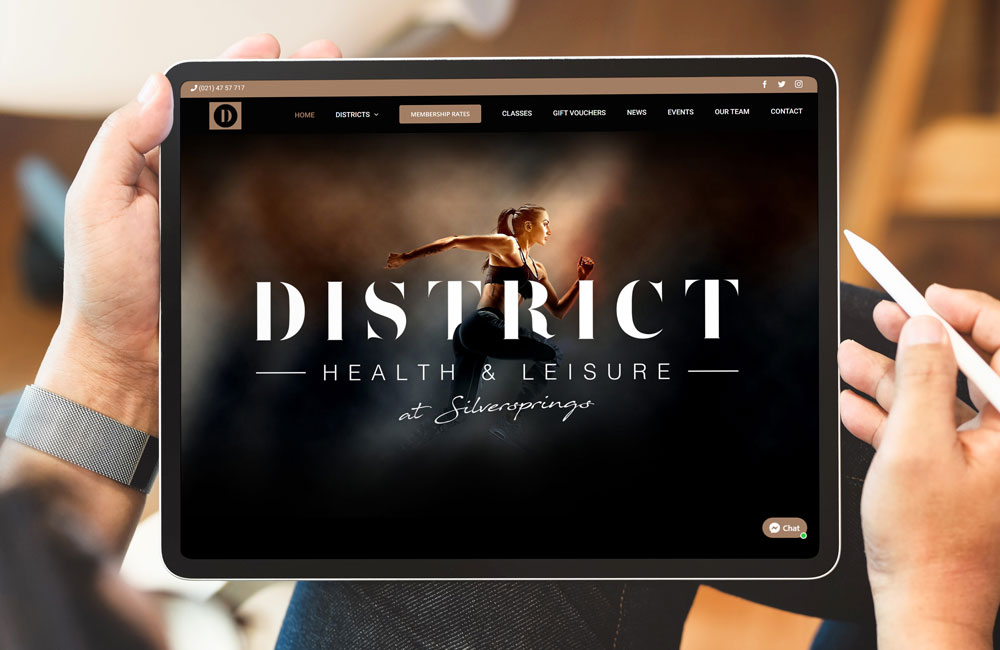
To choose the right fit for your project, it’s crucial to evaluate a web designer’s expertise and experience. A web designer with five or more years of experience is considered valuable due to the maturation of their skills over time. Examining a web designer’s portfolio of recent work can also provide insights into their design capabilities.
Providing mini-case studies or descriptions with project visuals helps demonstrate a web designer’s problem-solving ability and how they meet client objectives.
Understanding The Design Process

Successful collaboration between you and your web designer can be ensured by a clear understanding of the web design process. A typical web design process includes:
- Goal identification
- Scope definition
- Design
- Content creation
- Visualisation
- Development
- Launch
The designer should prioritise client consultation and collaboration throughout the process, ensuring the final design aligns with your business goals and vision.
Clarifying Project Management & Communication
Having a dedicated project manager can ensure a smooth process in a web design project, where clear communication is crucial. A project manager:
- Steers the project to completion
- Protects the development team from excessive client queries
- Organises the project timeline
- Uses project management software like Teamwork, Asana and StreamTime to keep track of live projects and ensure the project remains organised
Budgeting For Your Web Design Project
To budget appropriately, it’s crucial to understand the cost of your web design project. Obtain a detailed quote, understand the scope of included services, and discuss potential hidden costs to align financial expectations. Also, take a close look at any annual renewals costs for domain registration, hosting, plugins, maintenance and so on.
Assessing Technical Skills & Tools Used
The technical skills and tools a web designer uses can significantly affect your website’s quality. This includes proficiency in user experience (UX) design, knowledge of graphic design principles, and mastery of HTML and CSS.
Familiarity with software tools like Adobe Photoshop, Adobe Illustrator, and Sketch is crucial for web designers, as the level of expertise with these tools can influence the efficiency and speed of the design process.
Exploring Additional Services Offered
Creating a successful online presence involves more than just web design. Many web designers offer additional services like content creation, email marketing, and website maintenance that can enhance your website’s overall performance. These additional services can be particularly beneficial for small businesses that may not have the in-house resources to manage all aspects of their online presence.
Ensuring Website Security & Maintenance
To protect sensitive information and ensure a smooth user experience, website security and maintenance are crucial. This includes choosing a scalable and fast hosting solution, continuous testing, updates, and post-launch design improvements.
Regular software updates can protect against both known and emerging threats, enhancing the overall security of the website.
Analysing Portfolio & Style Compatibility
Valuable insights into a web designer’s design style and capabilities can be obtained by analysing their portfolio. A diverse portfolio exhibits the web designer’s ability to craft various aesthetic styles, effectively adapts to different brand identities and project requirements.
Quality of basics in a designer’s portfolio, such as layout, typography, and color scheme, serves as an indicator of their attention to detail and their design expertise.
Confirming Content Strategy & Ownership
Content is vital in engaging your audience and driving traffic to your website. A designer will need various inputs from you before starting a web design project. This includes your company’s Unique Selling Point (USP), ideal and current target audience, and clear set of goals for the website.
Providing existing brand materials, such as logos and brand guidelines, can ensure brand consistency in the design.
Setting Expectations For Timeline & Availability
The timeline for your web design project can be influenced by factors like:
- the designer’s availability
- the project scope
- the client’s expectations
- business goals
- website type
- design and tech requirements
- client-provided content
Accurate time estimates for project duration require knowledge of these factors.
To deal with potential delays and setbacks, it is advised to factor in a margin for error in the timeline and establish clear goals to manage smooth project flow.
Enquiring About Scalability & Future Growth
Your website should grow alongside your business. A good web designer will plan for future growth while designing the website, considering the forecasted growth of the business and the need for future updates or integration with other systems. Partnering with web design companies, like a web design firm or a web design agency, can ensure that your website evolves with your business needs.
Scalable web designs require:
- A robust content management system
- Capable web hosting
- Flexible site structure to facilitate easy updates
- Ability to handle increased traffic
- Integration of new features and services as the business grows
Checking Compliance & Accessibility Standards
When choosing a web designer, a key consideration is ensuring that your website is accessible to all users, including those with disabilities. Accessible web design includes:
- Text alternatives for non-text content
- High contrast text for readability
- Keyboard accessible functions
- Adherence to code standards for compatibility with assistive technologies
- Respect for users’ motion and color scheme preferences.
Discussing WCAG compliance can lead to better long-term website maintenance, as accessible websites are typically designed with cleaner code and structures that are easier to update.
Seeking References & Success Stories
To gauge a web designer’s reputation and effectiveness in past projects, it’s a good idea to check references and seek success stories. Speak with contacts who have hands-on experience with the web designer’s projects, as this can evaluate the project’s success and provide relevant insights, especially when these projects are similar in purpose and scope to your own.
Client testimonials, the scale of projects previously handled, and case studies with reviews add a layer of credibility and offer direct feedback from past clients, helping to gauge the web designer’s experience and effectiveness.
Deciding On Post-Launch Support Options
To ensure your website operates smoothly, post-launch support is crucial. This could include:
- Training for clients to update their website independently
- Ongoing maintenance and technical support
- Custom video tutorials tailored to the client’s specific website and its functionalities
Live training sessions, either in-person or via video conference, are also offered by web designers to teach clients how to manage and update their websites.
Reflecting On Company Culture Fit
Choosing a web designer who aligns with your company culture can foster positive cooperation and a strong business relationship. Alignment with web designers who share the company’s values and vision is fundamental for successful teamwork and fostering long-term work relationships. A lack of cultural fit can lead to challenges such as:
- poor integration
- decreased productivity
- increased conflict potential
- higher turnover intentions
Ready To Ask Some Questions?
Now that you’re equipped with the necessary knowledge and questions to ask a website designer, it’s time to start the conversation with a potential web designer. Keep in mind that the goal is to find a designer who:
- aligns with your business needs
- understands your brand
- can create a website that not only looks great but also functions well and achieves your business goals.
Summary
Choosing the right web designer is a critical decision that can greatly impact your business’s online presence. By asking the right questions, you can ensure that your web designer aligns with your business needs, understands your brand, and can create a website that not only looks great but also functions well and achieves your business goals. Remember, a good web designer is not just a service provider but a partner in your online success.
Frequently Asked Questions
What to look for when choosing a web design company?
Before choosing a web design company, use a comprehensive checklist to ensure you have all the necessary information. This is a crucial step in finding the right agency for your needs.
What to do before hiring a web designer?
Before hiring a web designer, make sure to review their previous client work on their website, paying attention to design styles and user experience. Ask to see more of their work if needed.
What is the purpose of my website?
The purpose of your website is crucial as it forms the foundation of your site’s strategy, informing goal-setting and measuring success. The purpose could range from sales for e-commerce, lead generation for consultants, to information for news sites and entertainment for video streaming.
What is included in post-launch support?
Post-launch support often includes client training for independent website updating, ongoing maintenance, and technical support, with the possibility of custom video tutorials for specific website functionalities. Providing these steps is essential to ensure a successful website after its launch.
How can I ensure my website is secure?
To ensure your website is secure, choose a scalable hosting solution, conduct regular testing, and prioritise continuous updates and post-launch design improvements. Regular software updates protect against known and emerging threats, enhancing overall security.


